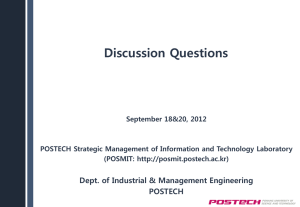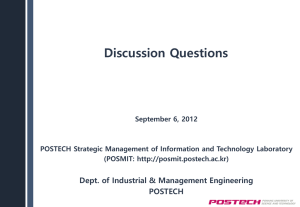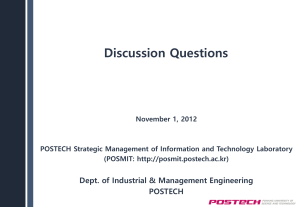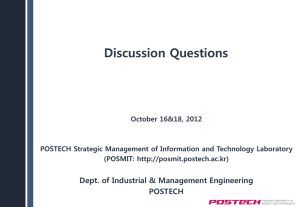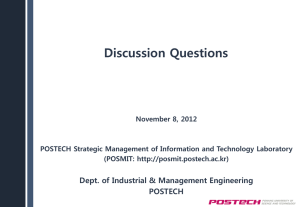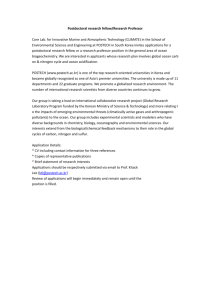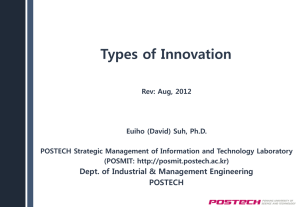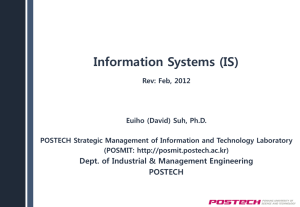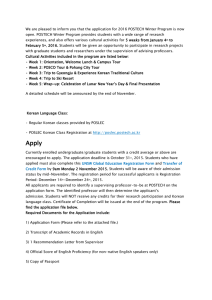Chapter 11-2
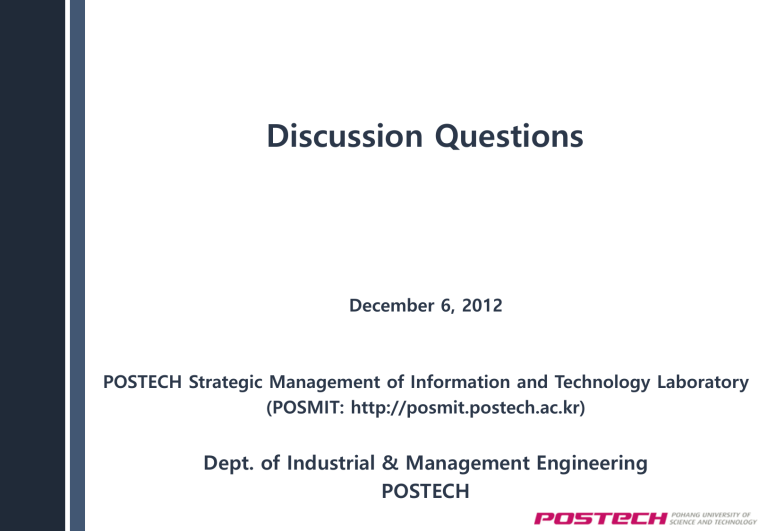
Discussion Questions
December 6, 2012
POSTECH Strategic Management of Information and Technology Laboratory
(POSMIT: http://posmit.postech.ac.kr)
Dept. of Industrial & Management Engineering
POSTECH
Discussion Questions
■ Chapter 11. Managing the New Product Development Process
3.
Are there some industries in which a parallel process would not be possible or effective?
– Industry in which small product design changes result in large process design changes
A parallel development process would probably not be well suited
• Necessary to have product design completely finished before process design commences
• More project-specific than industry-specific
– For example, if a firm is contemplating whether to construct a part out of pressed steel or injection molded plastic, such a decision will have drastic implications for the design process used and it would be unlikely to commence process design or manufacturing until product design is finalized.
– Similarly, if a product design will require regulatory or customer approval (e.g., the development of a military aircraft for a defense contract, or the proposed design of a building, etc.), it may not make sense to commence process design or manufacturing until such approval is secured. Students may come up with other examples.
2
Discussion Questions
■ Chapter 11. Managing the New Product Development Process
4.
What are the benefits and costs of involving customers and suppliers in the development process?
– Benefits of involving customers
• High possibility to stay focused on projects that meet the customer’s needs, resulting in more successful projects
– Benefits of involving suppliers
• An additional source of information and ideas, perhaps suggesting an alternative input that can reduce costs or time to market
• Ensuring that any necessary changes are made quickly in order to minimize development time
– Cost of involving customers and suppliers
•
• Any time more individuals are added to a process, the cost of managing everyone increases
(In the above instances, however, the potential savings is likely to outweigh the costs)
3
